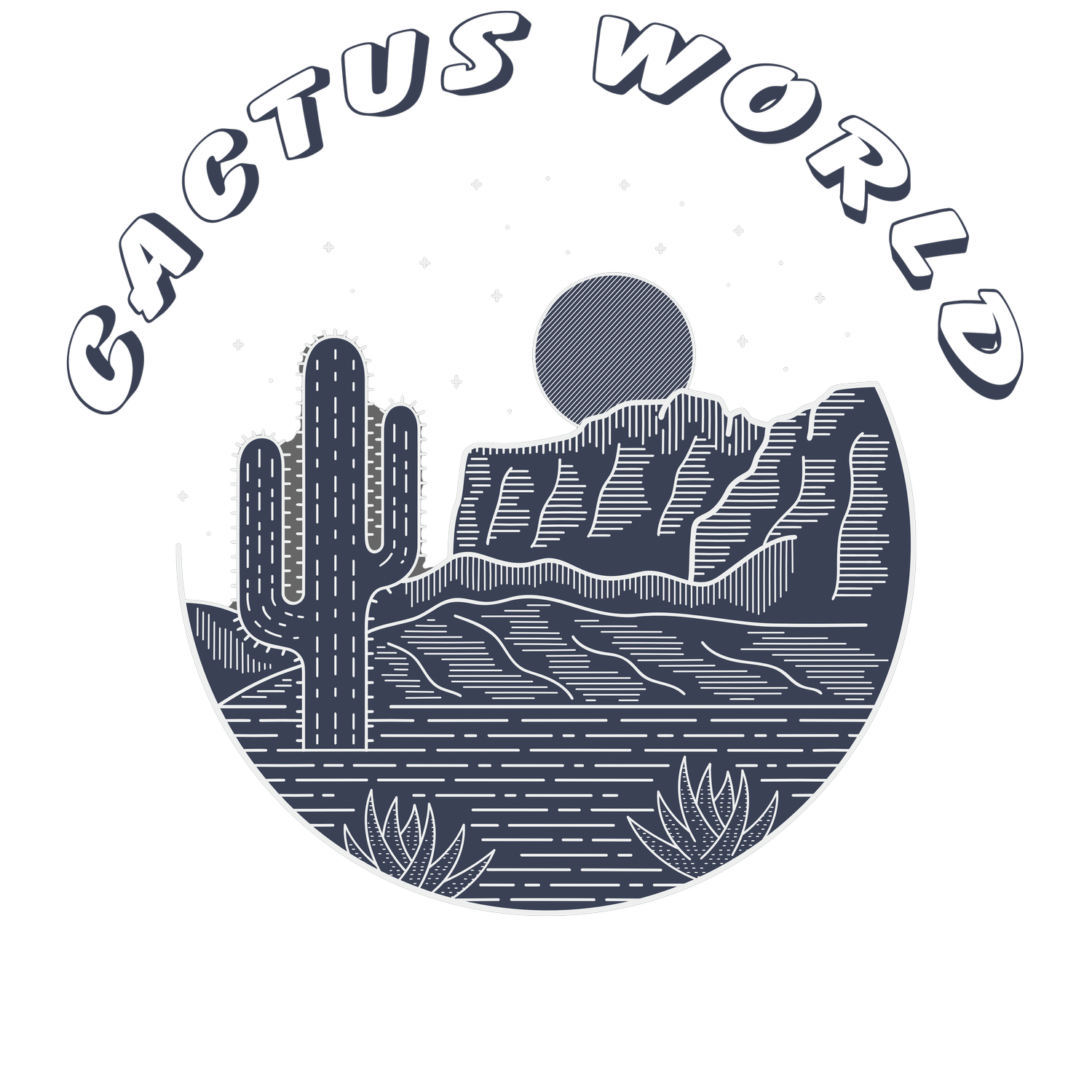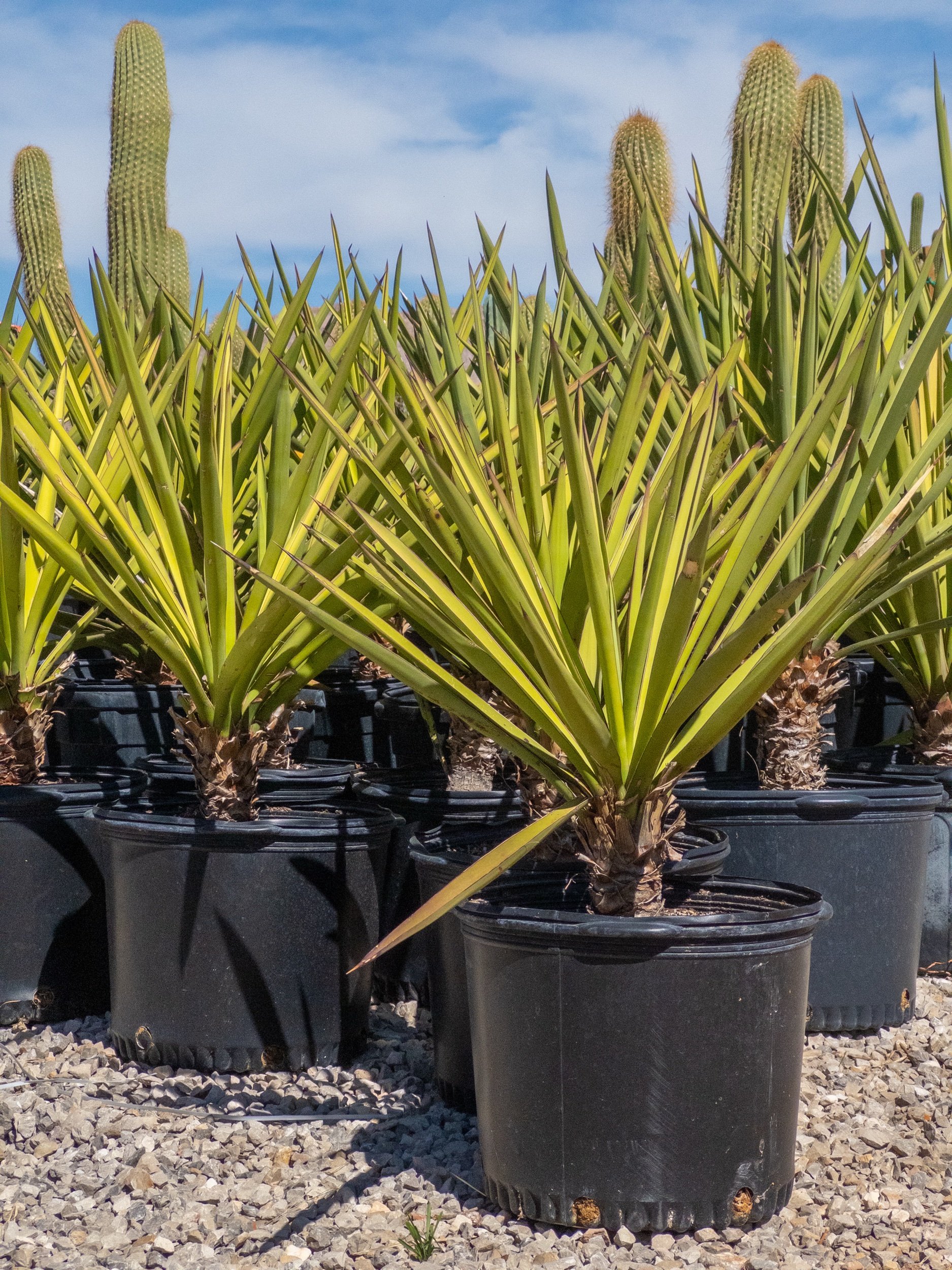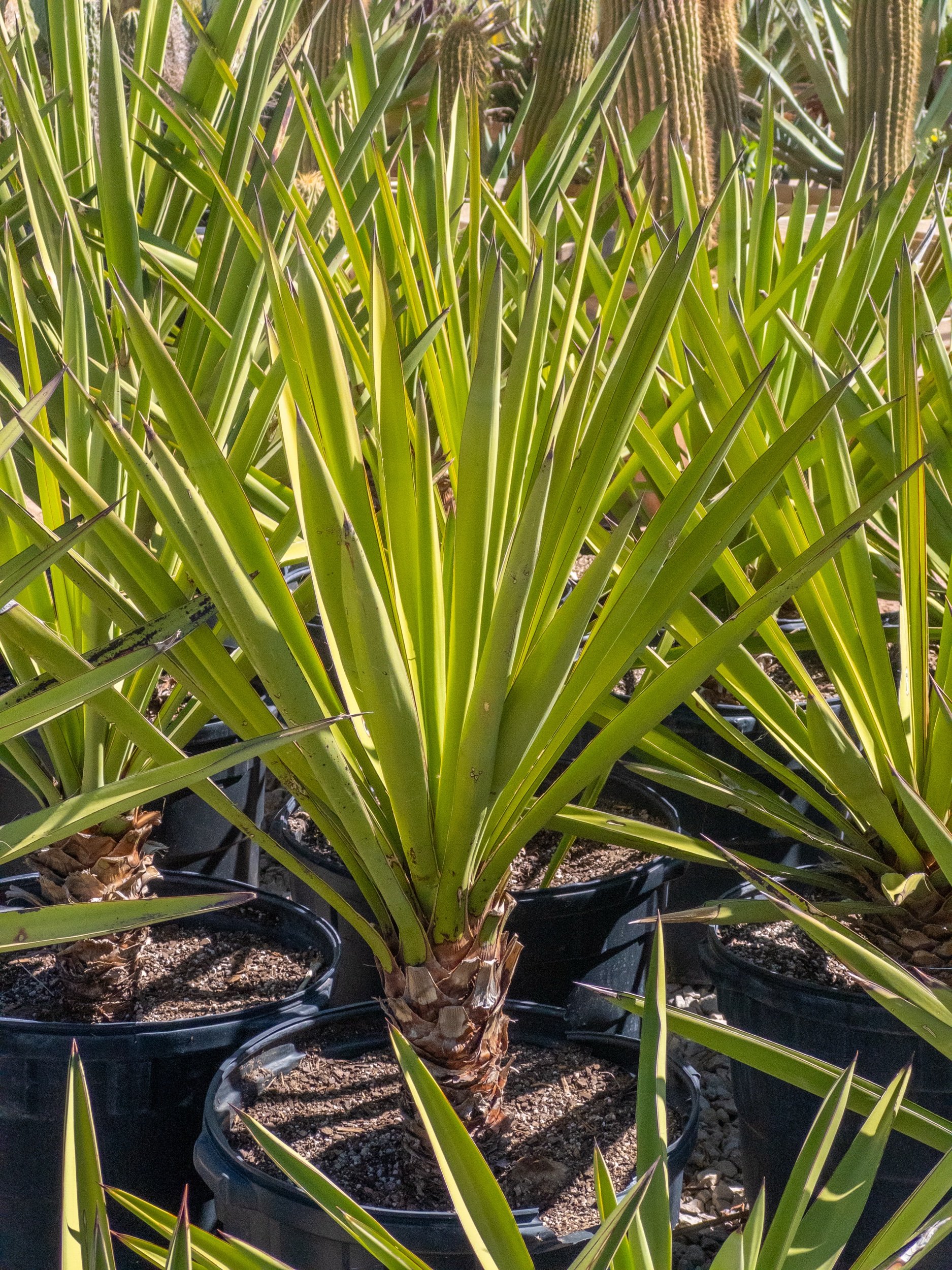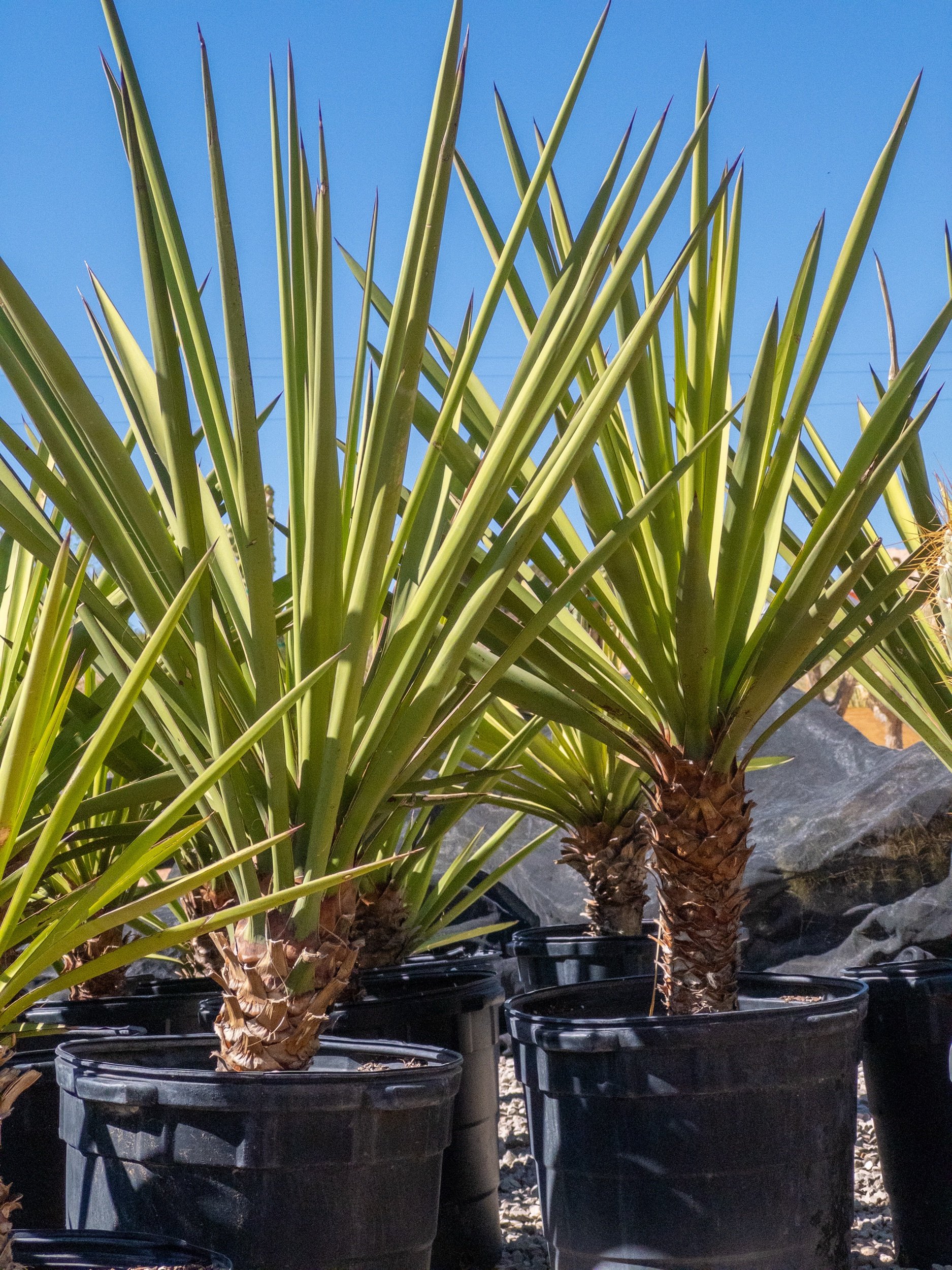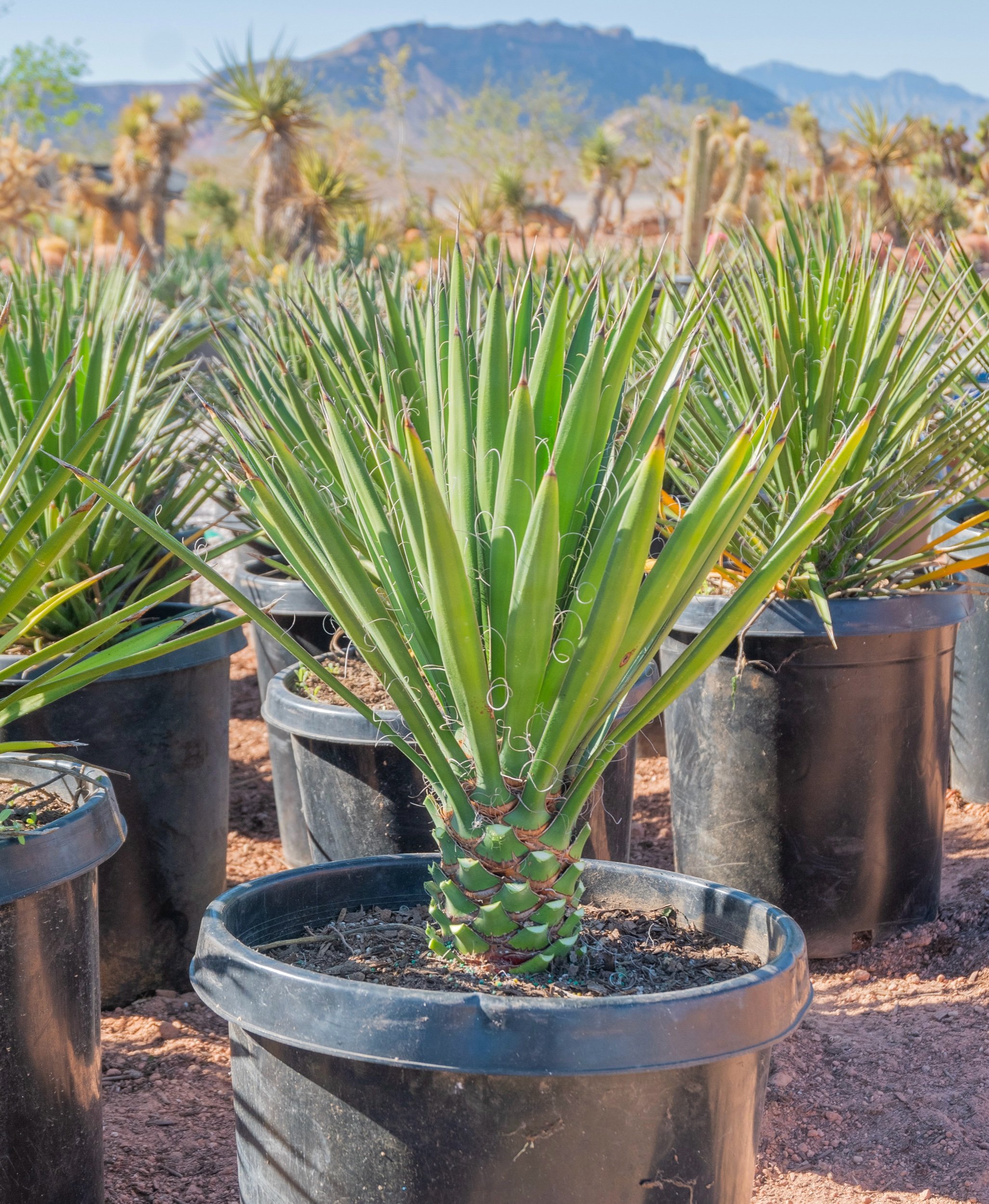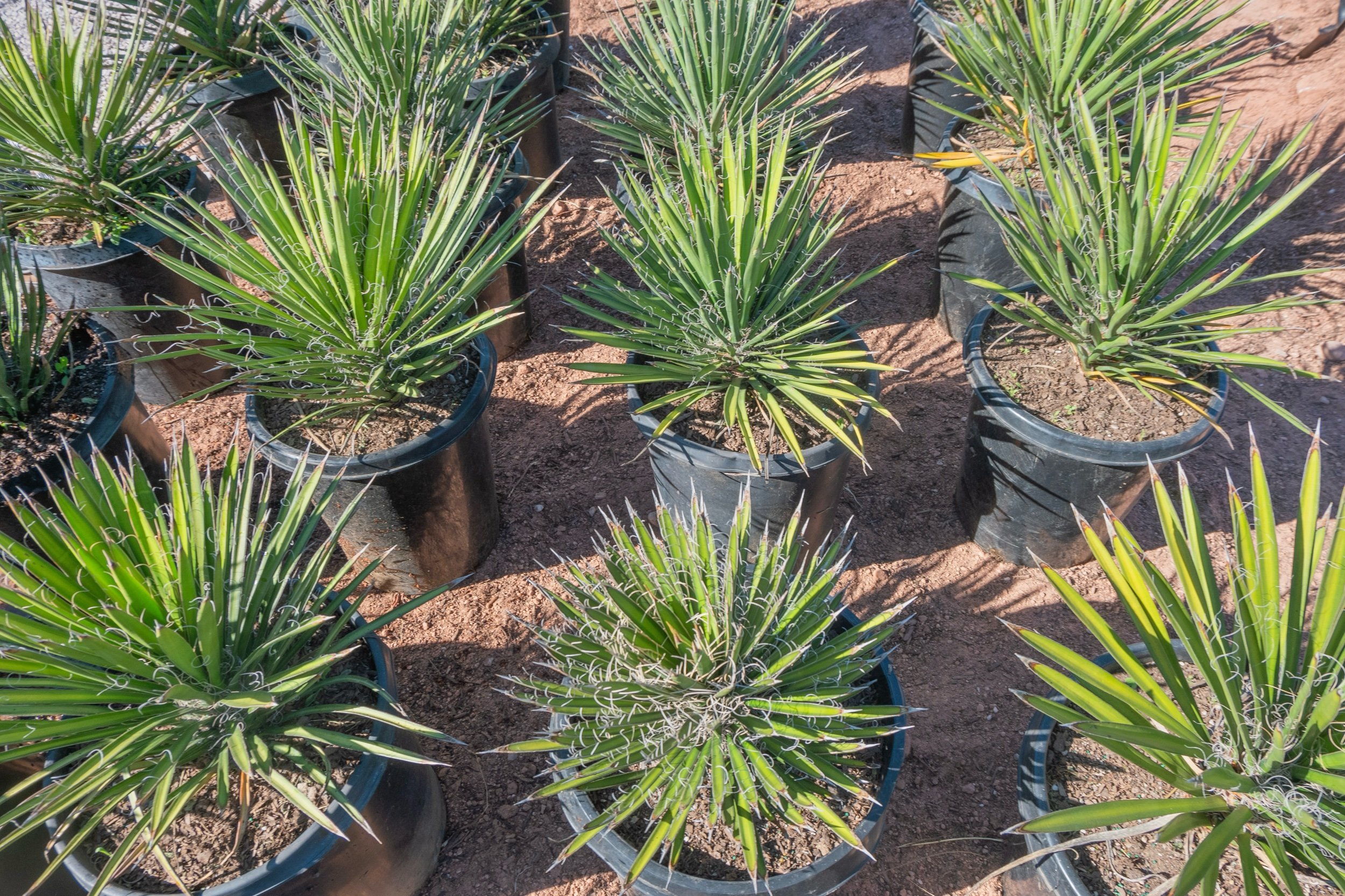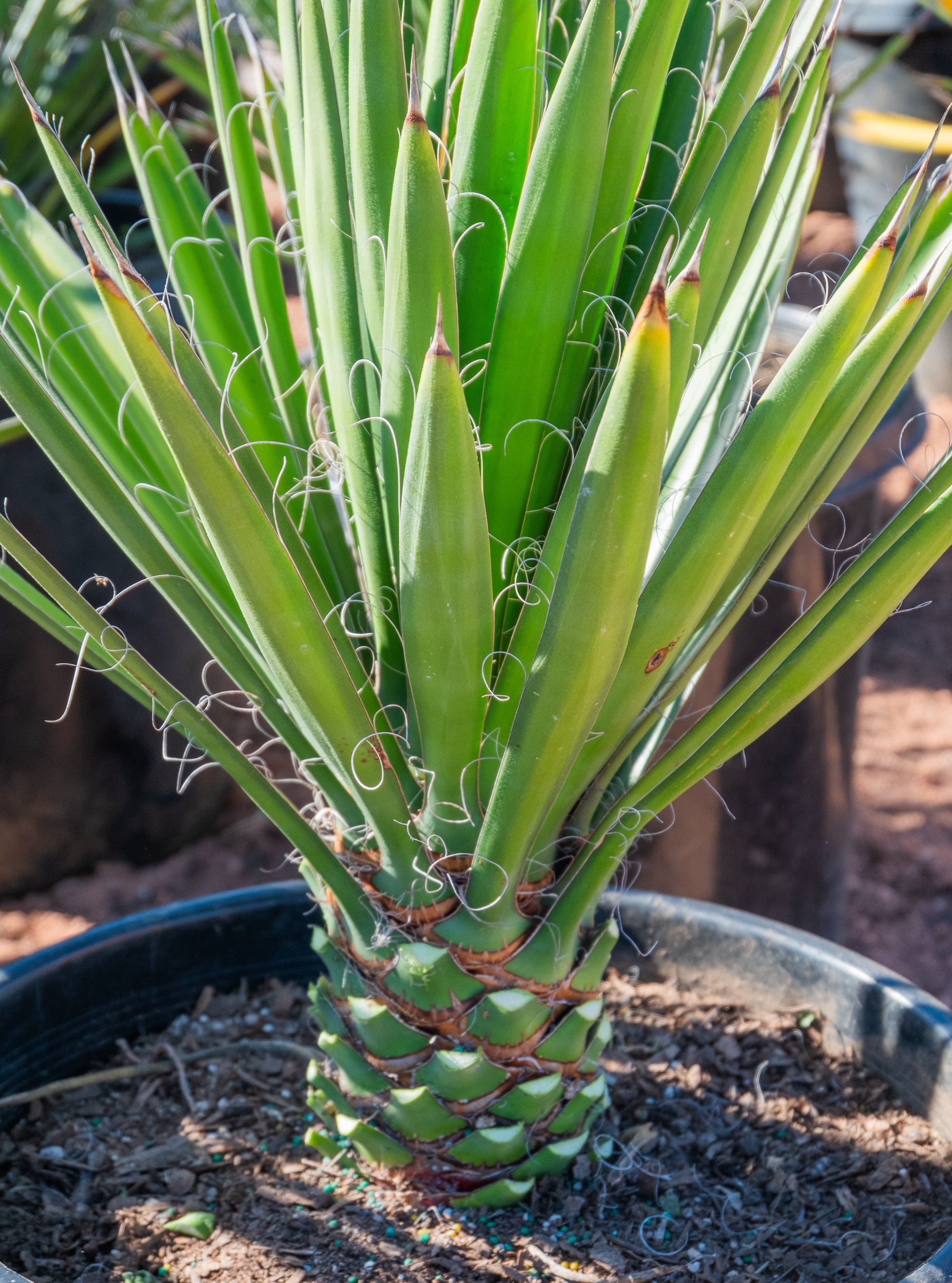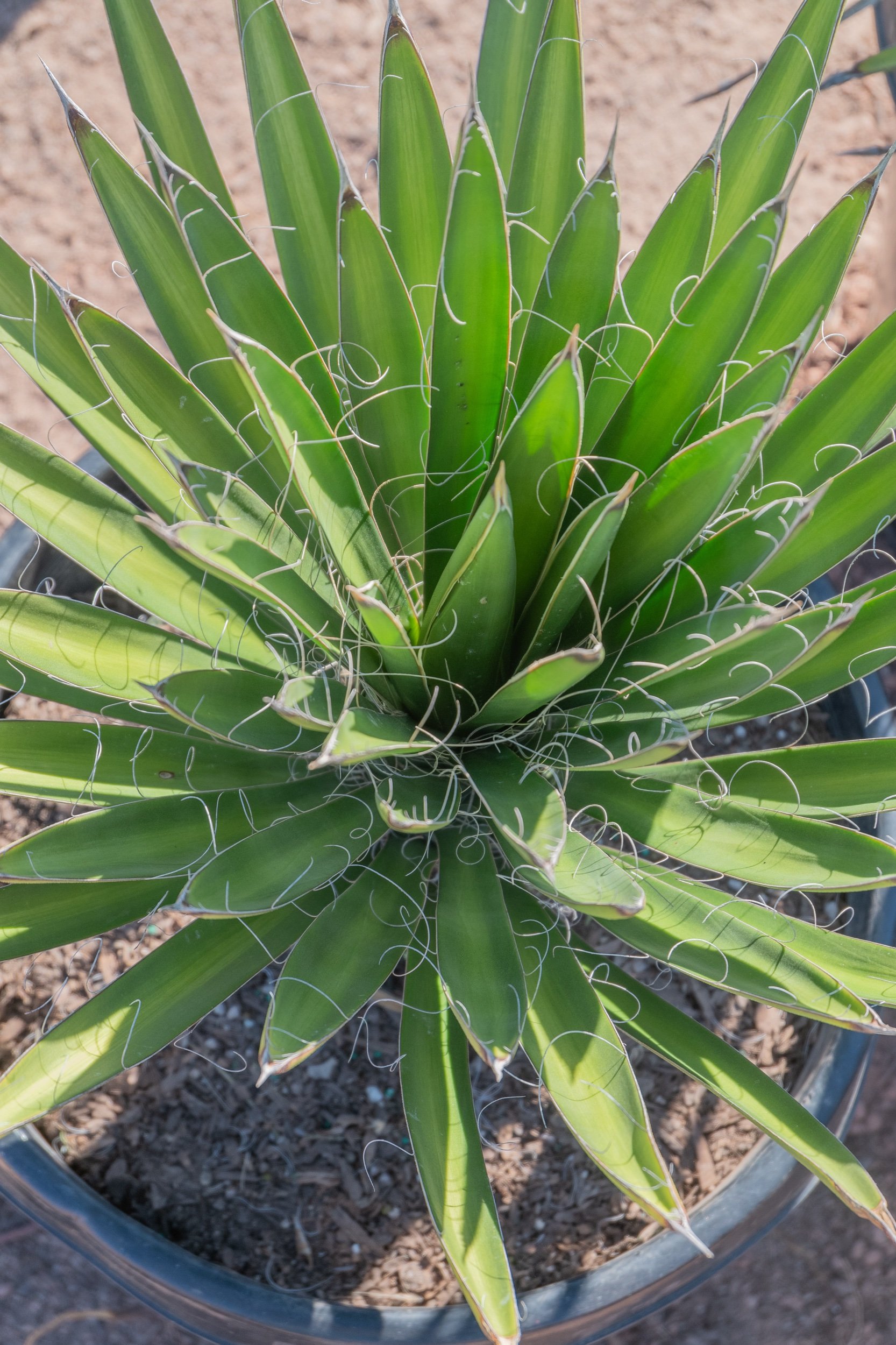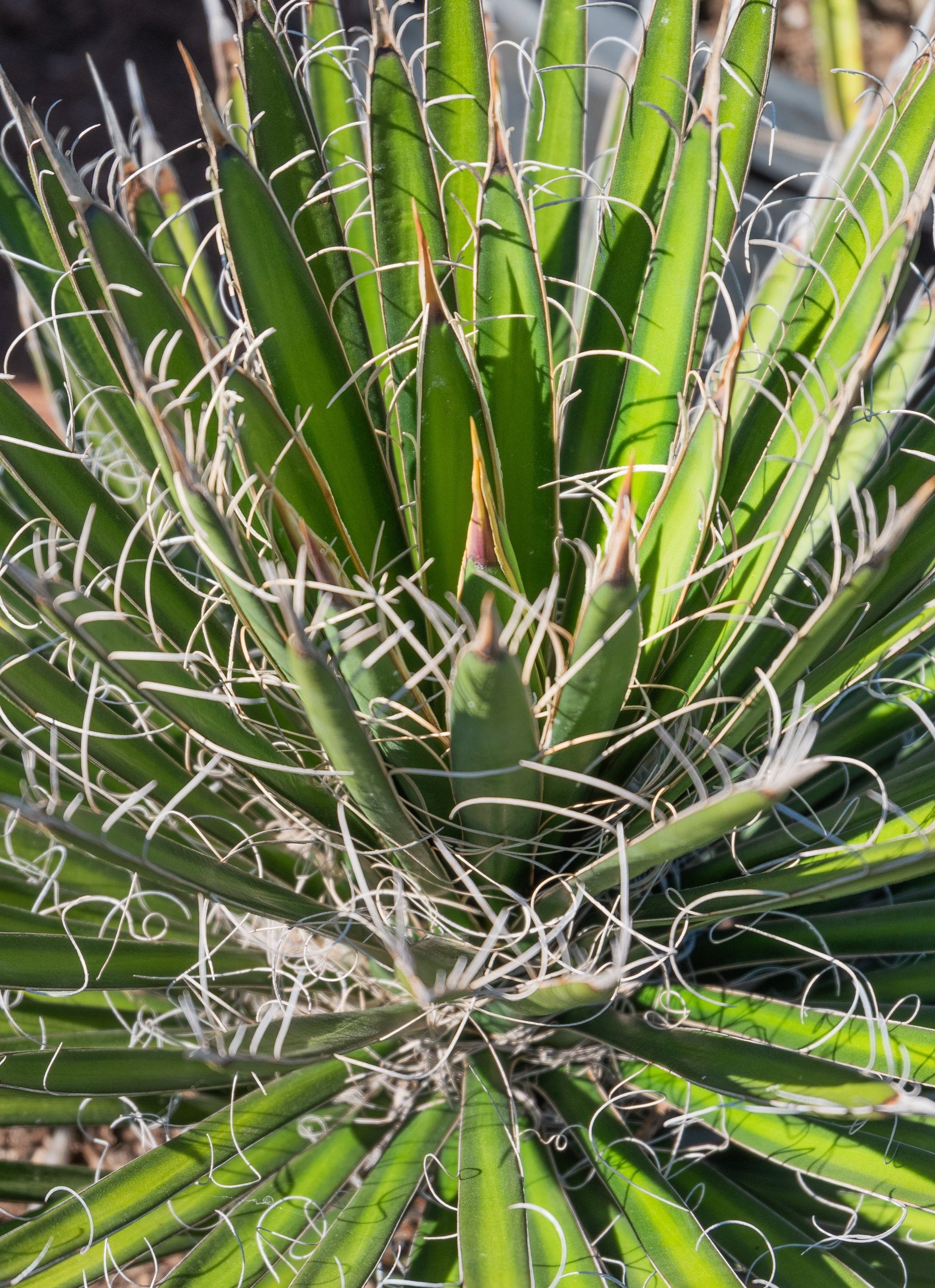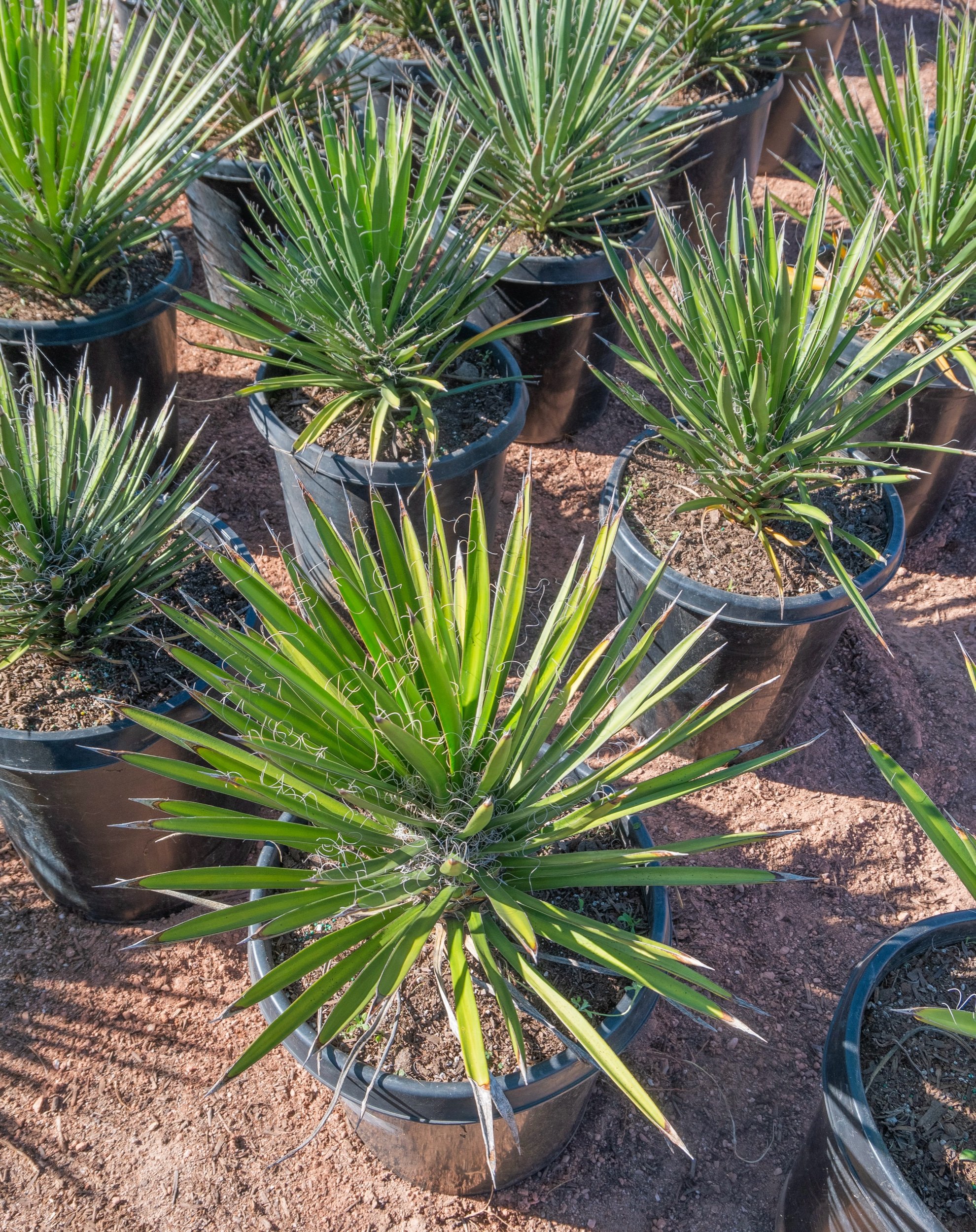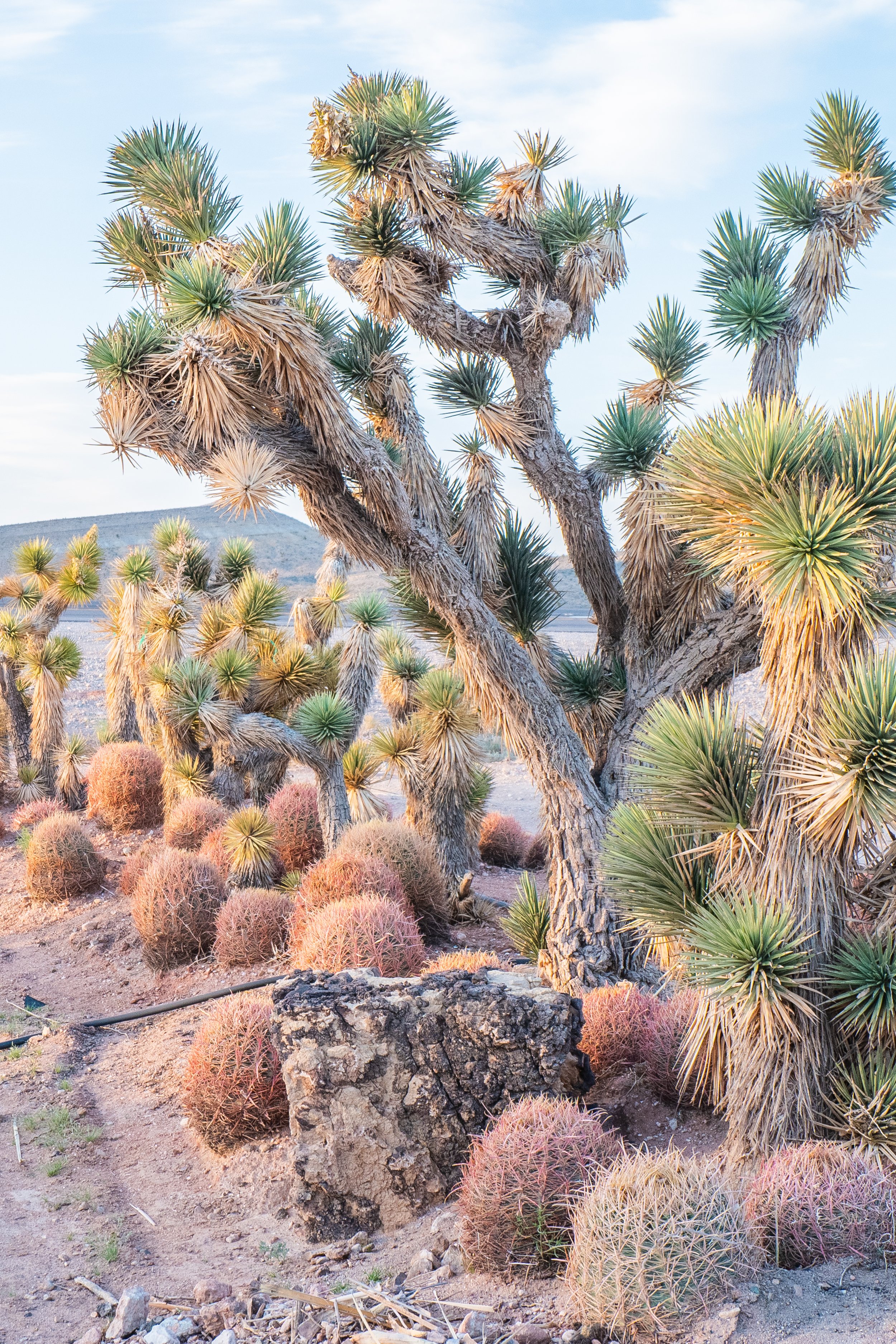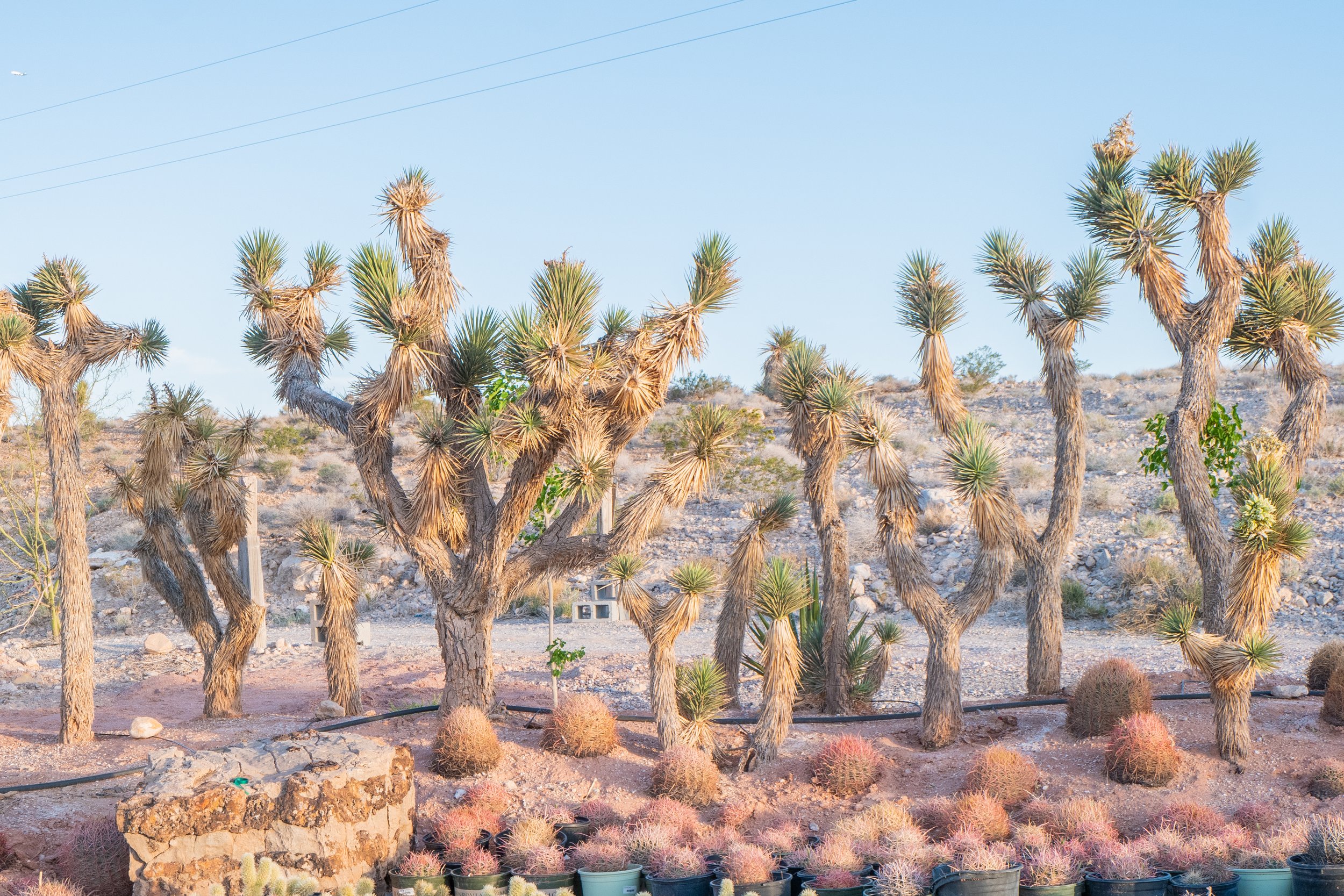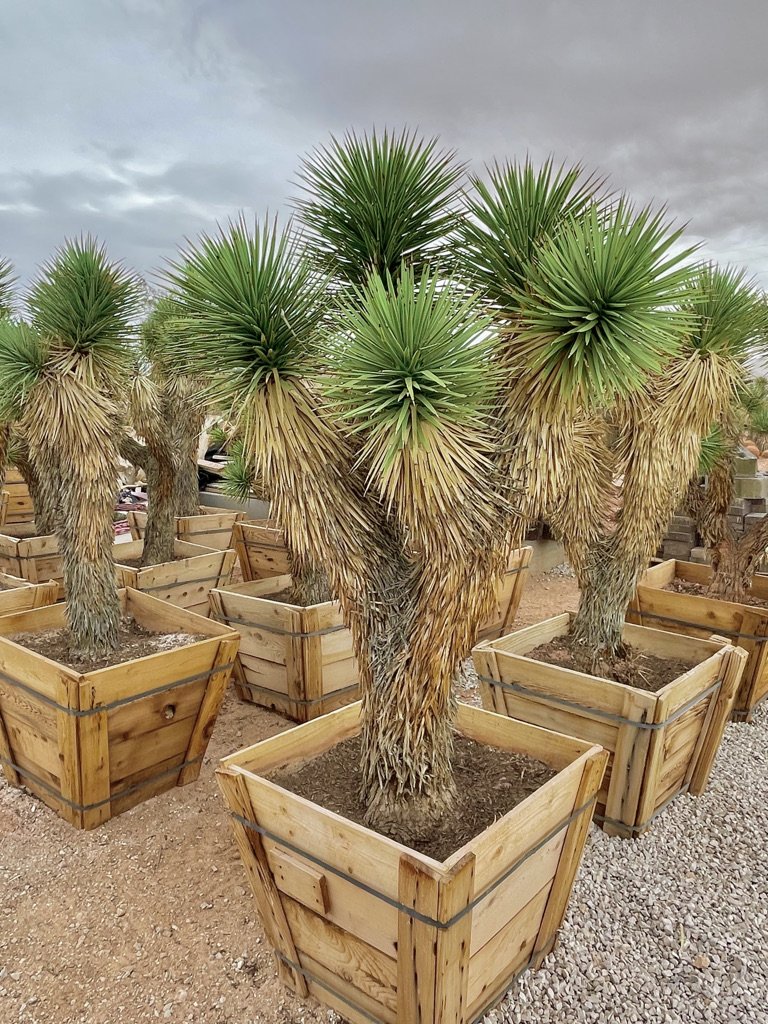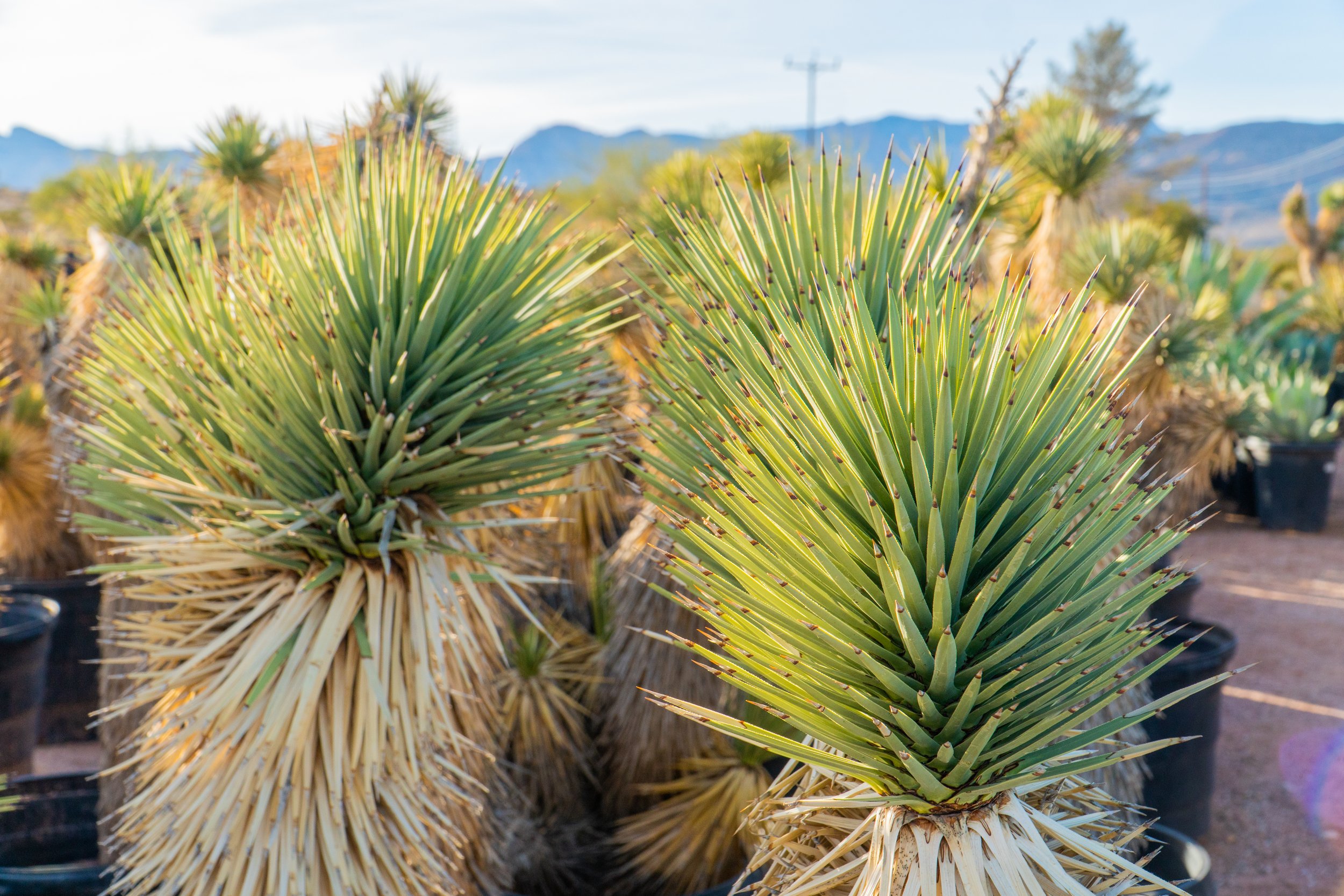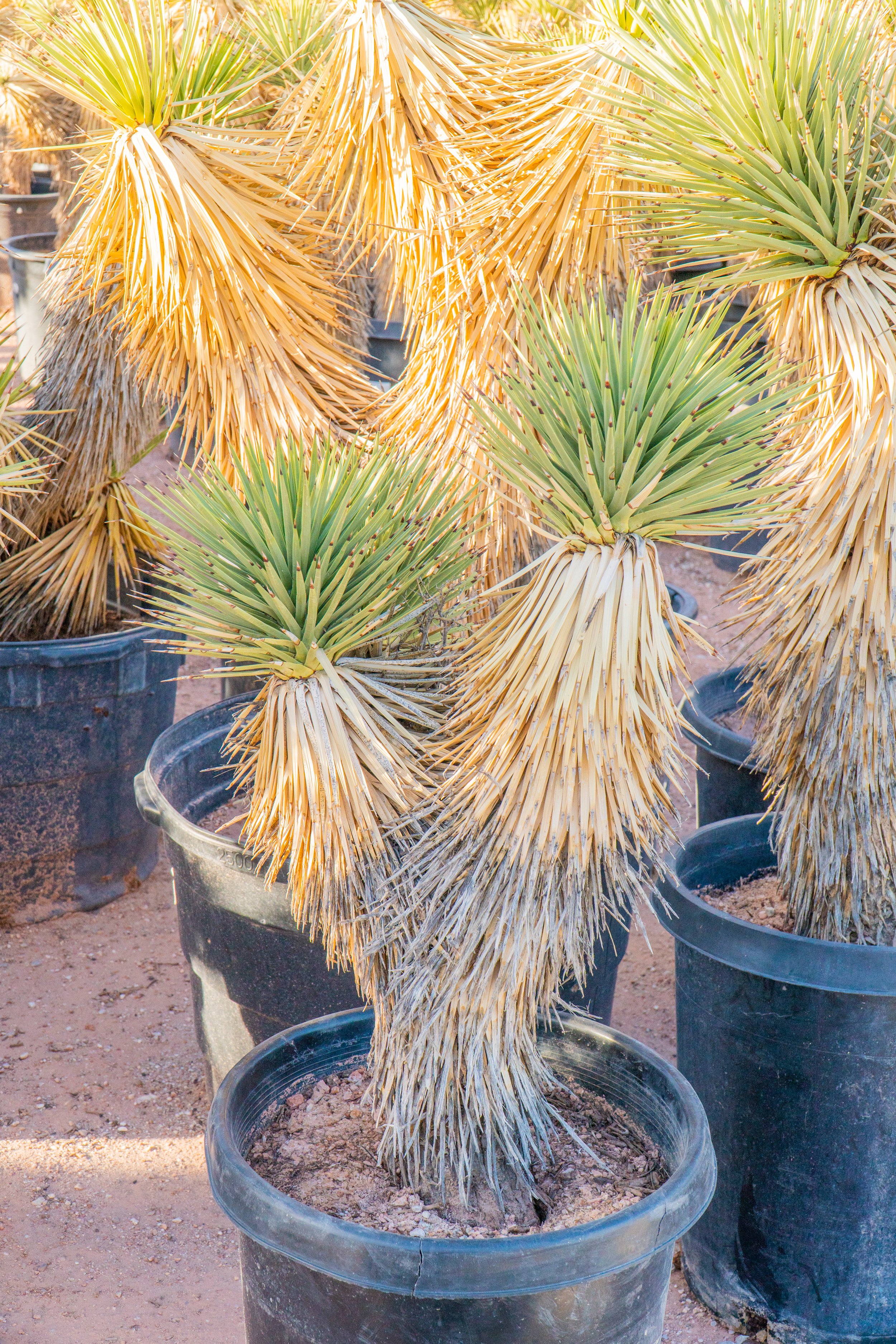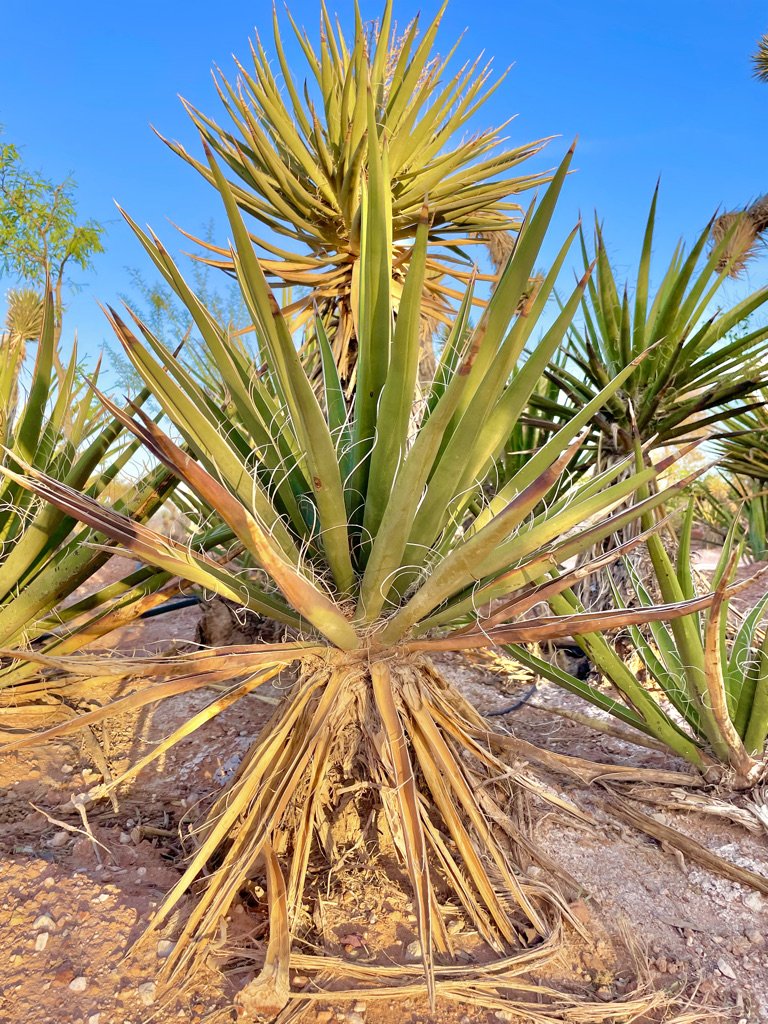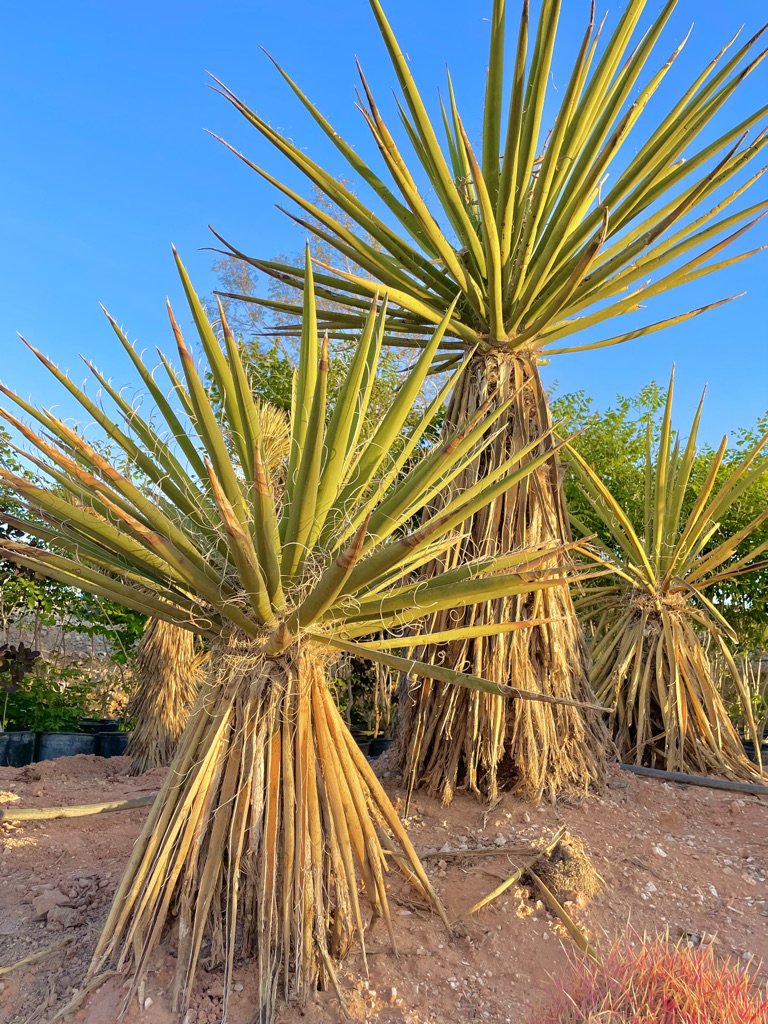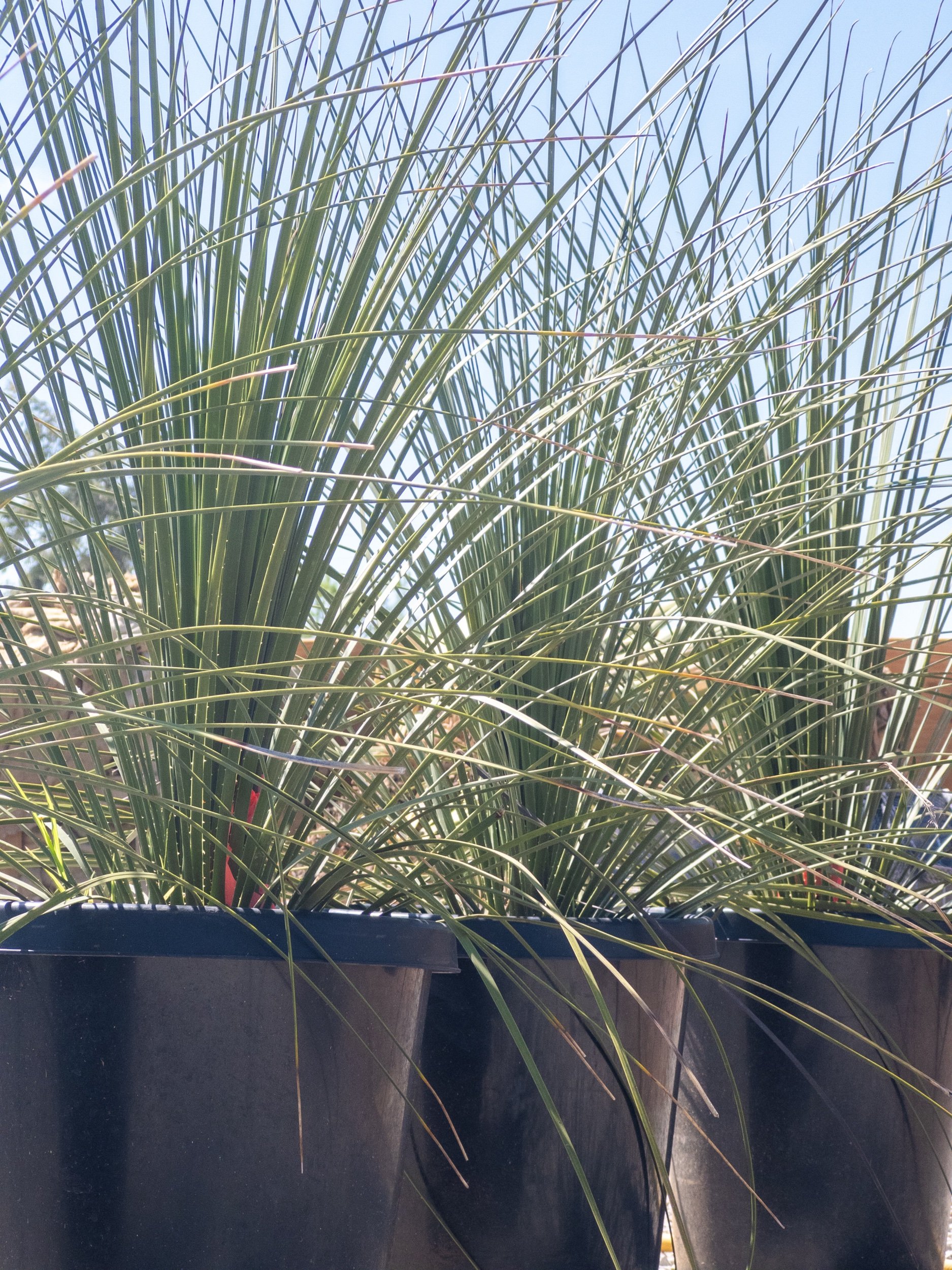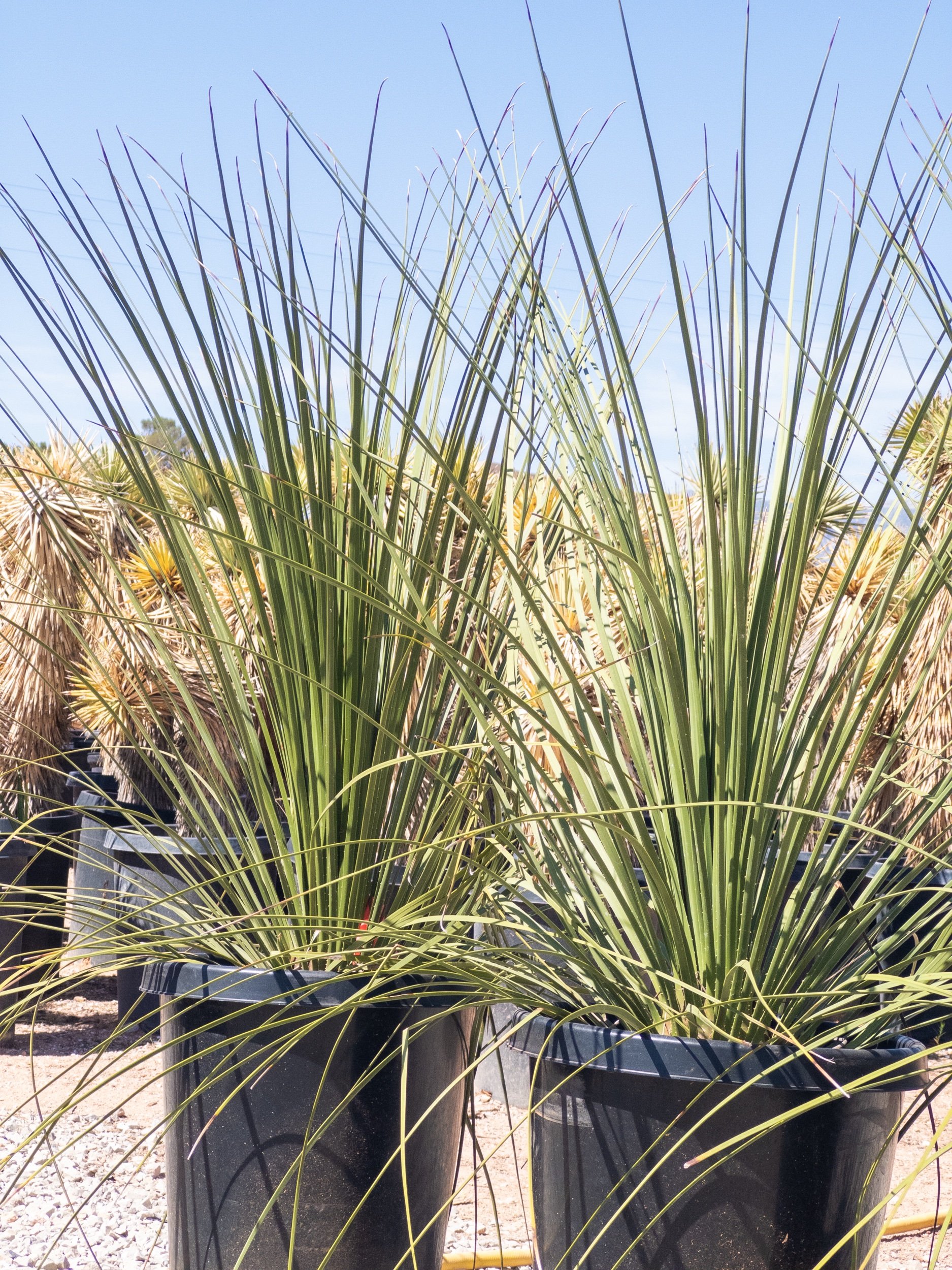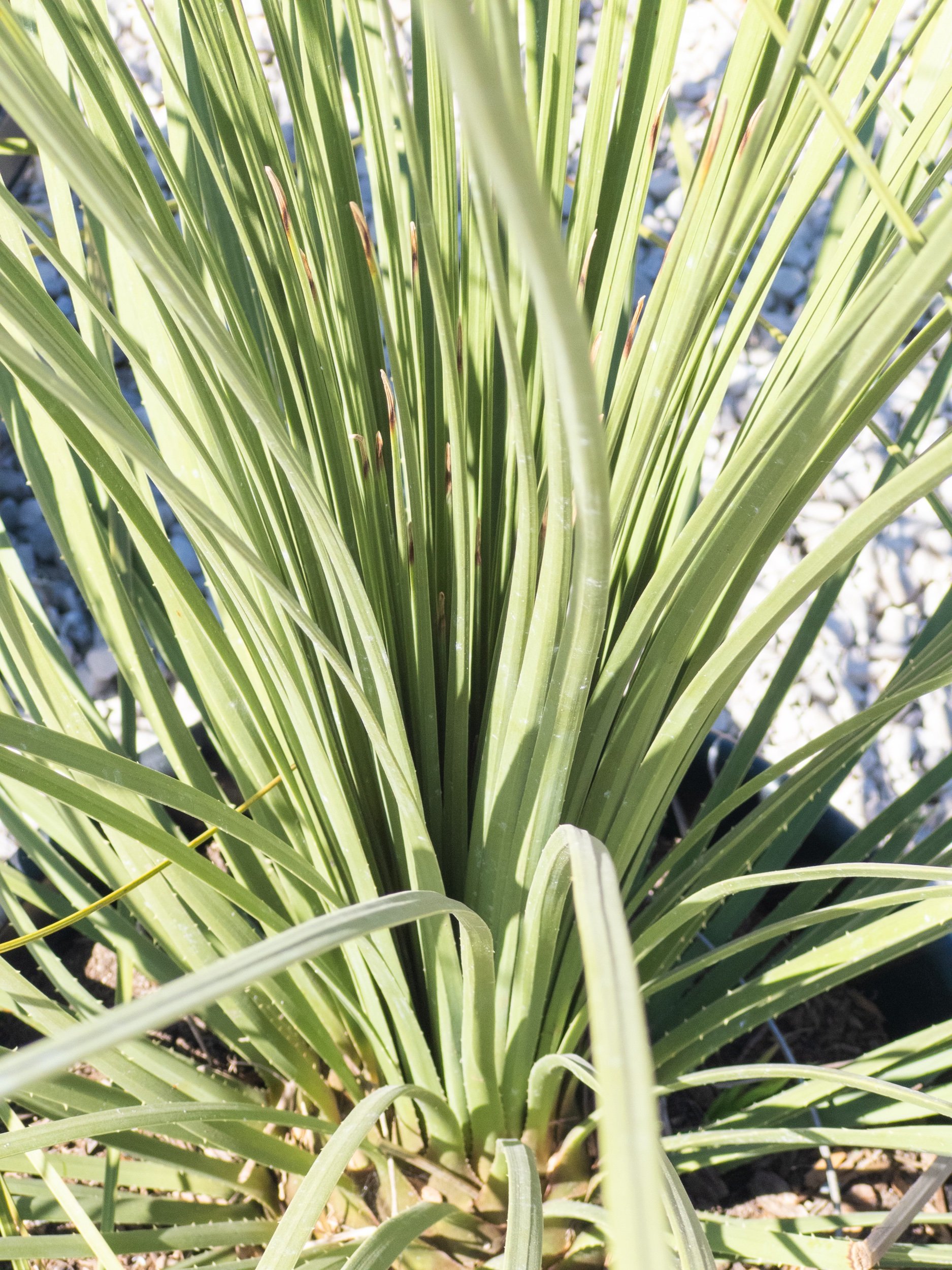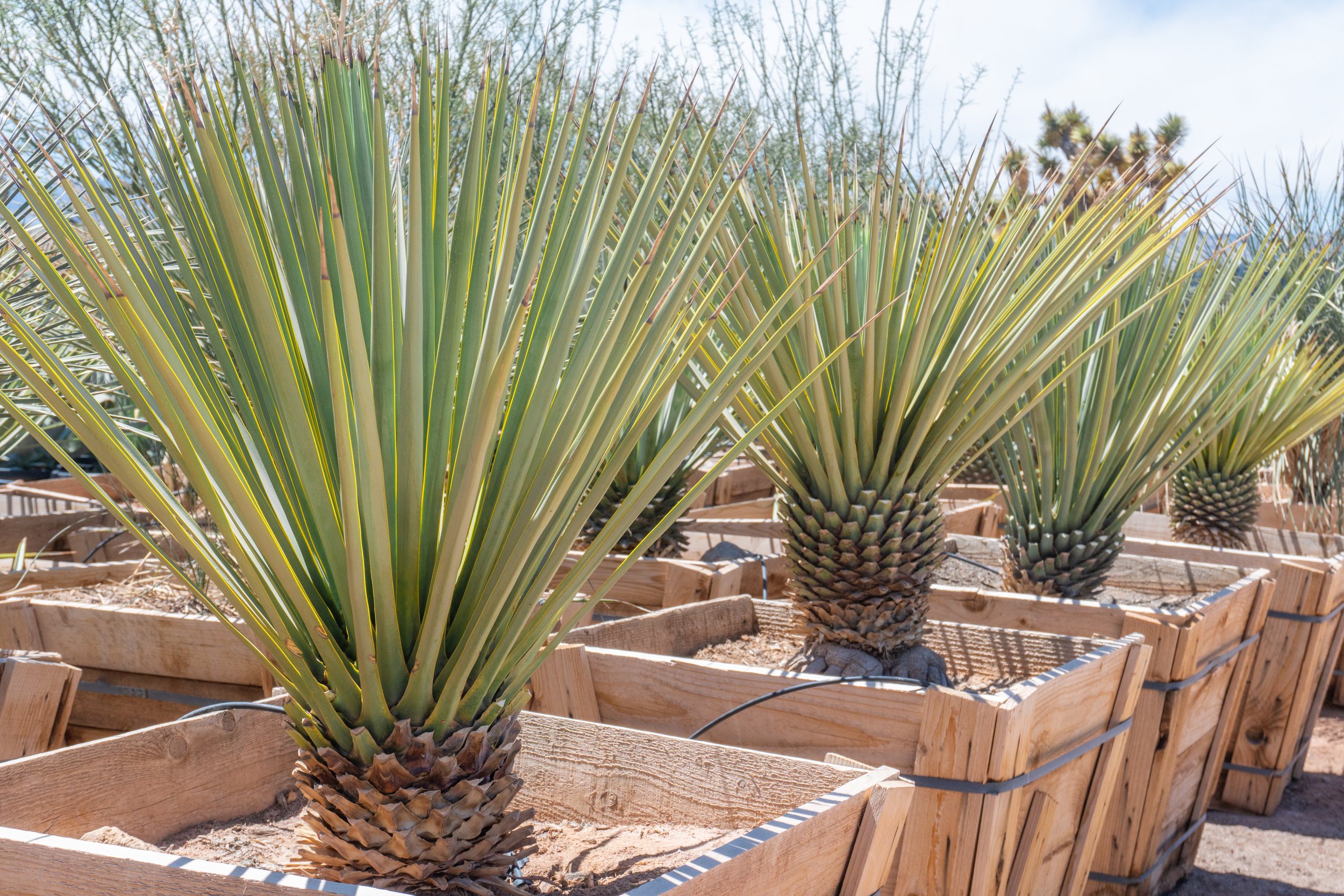 Image 1 of 8
Image 1 of 8

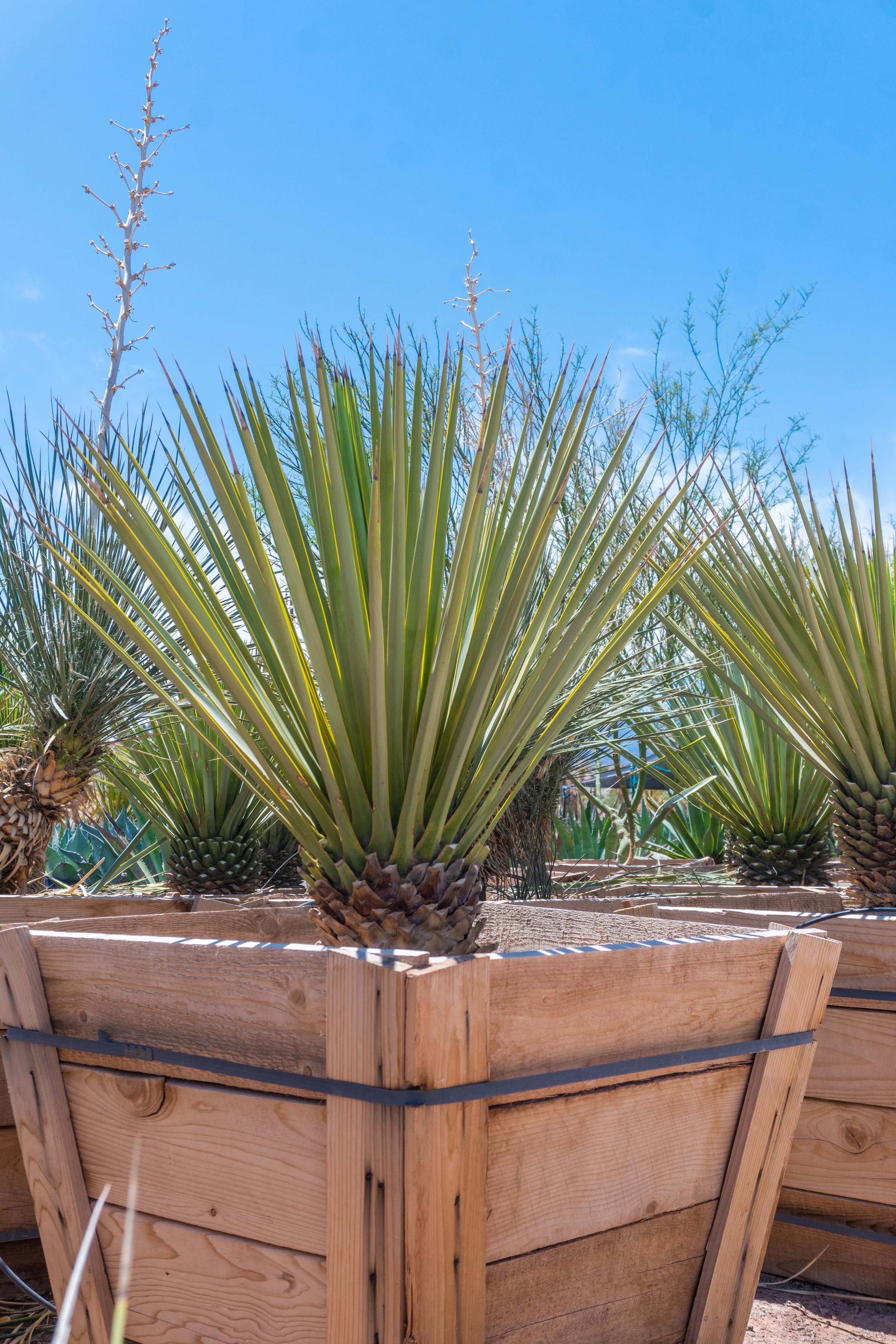 Image 2 of 8
Image 2 of 8

 Image 3 of 8
Image 3 of 8

 Image 4 of 8
Image 4 of 8

 Image 5 of 8
Image 5 of 8

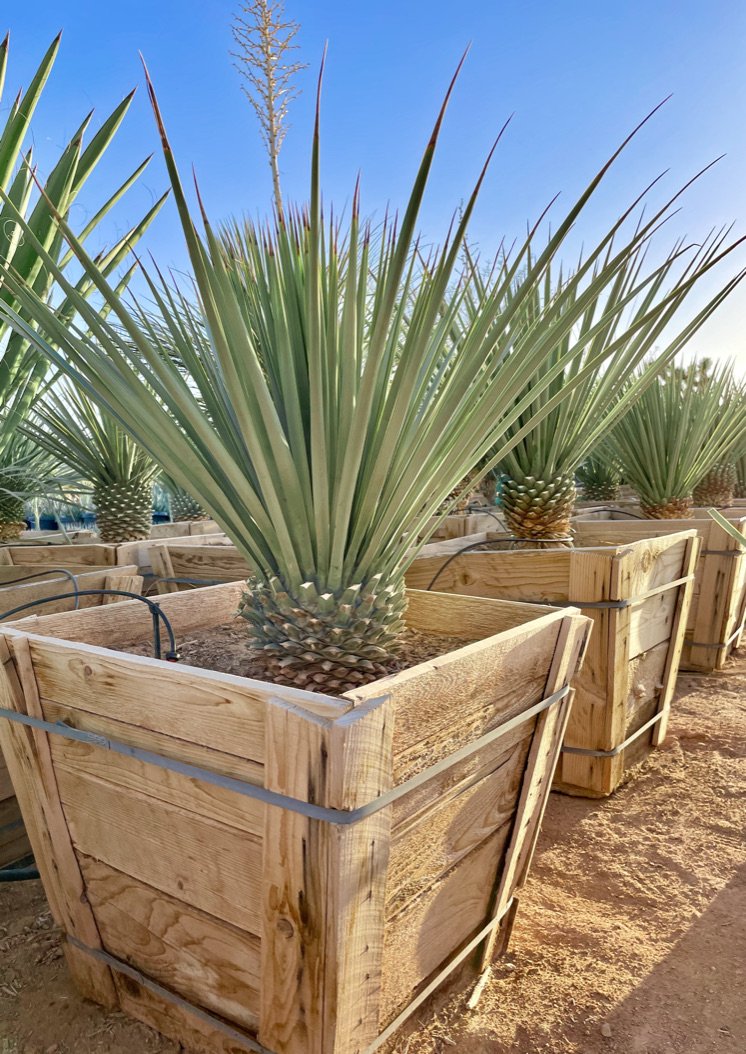 Image 6 of 8
Image 6 of 8

 Image 7 of 8
Image 7 of 8

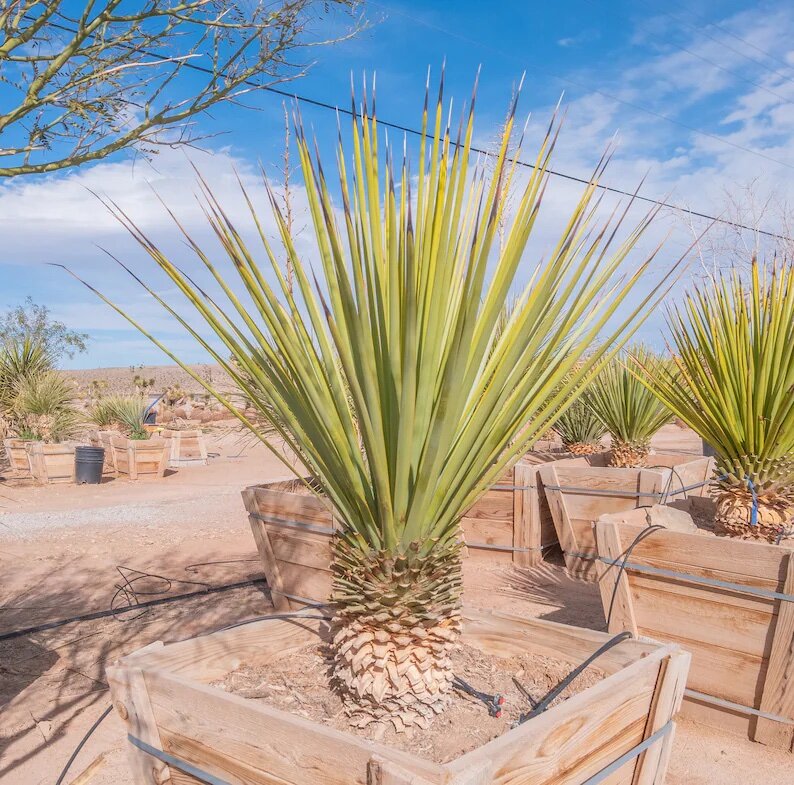 Image 8 of 8
Image 8 of 8









Yucca Rigida
Yucca rigida, commonly known as the Blue Yucca, is a stunning succulent plant that is native to the Chihuahuan Desert in northern Mexico.
In terms of beauty, Yucca rigida is highly prized by gardeners and landscapers for its striking blue-green color and unique, spiky form. Its stiff, sword-shaped leaves grow in a rosette pattern and can reach up to three feet in length. In the spring, it produces a tall, branching inflorescence that is covered in large, creamy-white flowers, which attract a variety of pollinators.
In terms of history, Yucca rigida has been used by indigenous people in the region for centuries for a variety of purposes, including food, medicine, and fiber. It was also used in religious and ceremonial contexts.
In terms of environmental needs, Yucca rigida is a hardy plant that is well-adapted to dry, arid climates. It prefers well-drained soil and full sun exposure, and is able to tolerate hot, dry conditions and periodic droughts. It is a low-maintenance plant that does not require regular fertilization or watering, but may benefit from occasional pruning to remove dead or damaged leaves.
Overall, Yucca rigida is a striking and unique plant with a rich history and cultural significance. Its resilience and adaptability make it an excellent choice for desert gardens and landscapes, while its stunning beauty and pollinator-friendly flowers make it a valuable addition to any outdoor space.
Yucca rigida, commonly known as the Blue Yucca, is a stunning succulent plant that is native to the Chihuahuan Desert in northern Mexico.
In terms of beauty, Yucca rigida is highly prized by gardeners and landscapers for its striking blue-green color and unique, spiky form. Its stiff, sword-shaped leaves grow in a rosette pattern and can reach up to three feet in length. In the spring, it produces a tall, branching inflorescence that is covered in large, creamy-white flowers, which attract a variety of pollinators.
In terms of history, Yucca rigida has been used by indigenous people in the region for centuries for a variety of purposes, including food, medicine, and fiber. It was also used in religious and ceremonial contexts.
In terms of environmental needs, Yucca rigida is a hardy plant that is well-adapted to dry, arid climates. It prefers well-drained soil and full sun exposure, and is able to tolerate hot, dry conditions and periodic droughts. It is a low-maintenance plant that does not require regular fertilization or watering, but may benefit from occasional pruning to remove dead or damaged leaves.
Overall, Yucca rigida is a striking and unique plant with a rich history and cultural significance. Its resilience and adaptability make it an excellent choice for desert gardens and landscapes, while its stunning beauty and pollinator-friendly flowers make it a valuable addition to any outdoor space.
